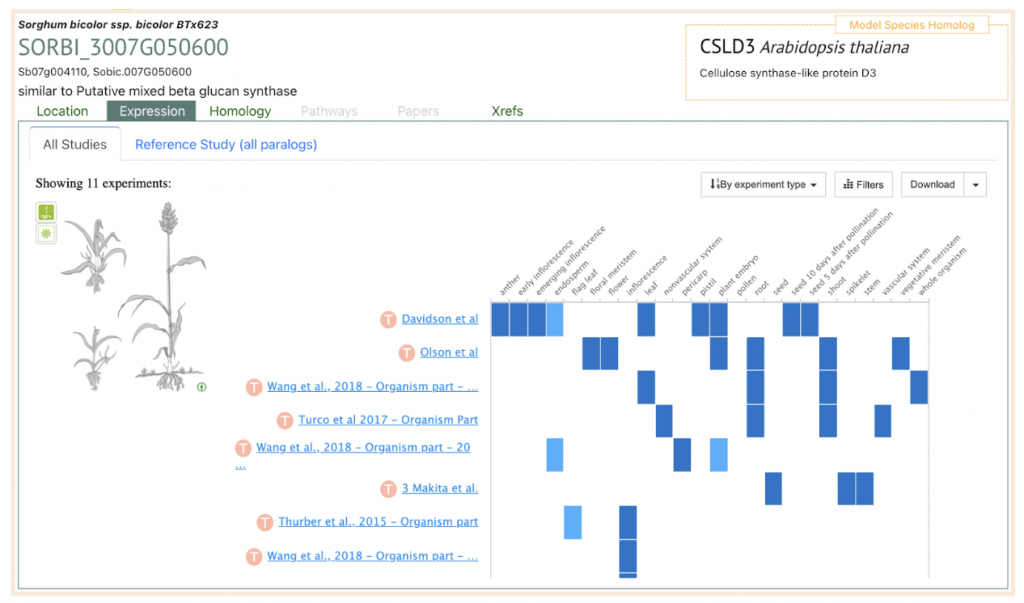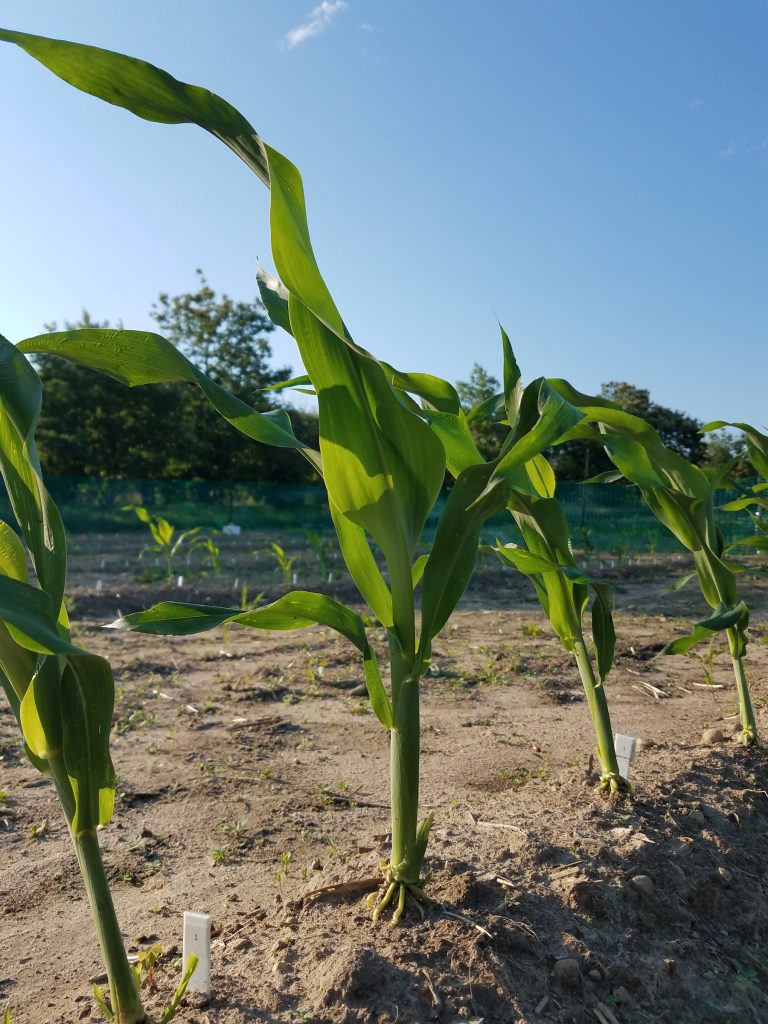Identification of Mixed-linkage glucan Lichenases in Sorghum bicolor has Implications for Manipulating Digestibility and Nutritional Value
A major portion of a plant’s total biomass is derived from the primary and secondary cell walls. In grasses like sorghum, one component of the cell wall is Mixed-linkage glucan (MLG), which is itself composed of glucose monomers linked by β-1,3 and β-1,4 bonds. MLG functions as a source of mobilizable storage of carbohydrates and as structural support in the cell wall and is a good target for increasing renewable sources of easily digestible carbohydrates. This would be a huge benefit in the generation of biofuels and bioproducts derived from cell wall soluble carbohydrates. Past research has shown that synthesis mediated by cellulose synthase-like proteins and degradation mediated by MLG lichenases contribute to MLG accumulation. It is known that, similar to other grasses, sorghum has one major MLG synthase (CSLF6: SORBI_3007G050600). The present study aimed to identify MLG lichenases in Sorghum bicolor. Kim and colleagues, from Michigan State University and Texas A&M University, explored homologs of barley and Brachypodium genes that encode lichenases in S. bicolor. Three sorghum lichenases (SbLCH1-3: SORBI_3003G421900, SORBI_3009G119200, SORBI_3009G119400) were identified and then investigated in terms of their association with the expression of the MLG synthase SbCSLF6 as well as the amount of MLG and starch. During leaf development and day-night cycles MLG accumulation was correlated with the expression of SbCSLF6 and SbLCH1-3, which were organ and cell-specific. Their findings coincide with the authors’ hypotheses that there is high expression of SbCSLF6 and relatively low expression of SbLCH1-3 early in leaf development resulting in MLG accumulation, but as the leaf develops there is an increase in SbLCH1 expression and a decrease in MLG levels. The authors postulate that these events most likely lead to a remobilization of MLG, resulting in the production of hexoses for growth and building cell walls. Overall, Kim et al.’s work adds to the understanding of the function of MLG in sorghum and has potential implications for the manipulation of MLG via the lichenases they characterized to modify the cell wall, improving digestibility and nutritional value.
Our objective in the Great Lakes Bioenergy Research Center is the creation of elite sorghum varieties enriched with high levels of mixed-Linkage Glucan (MLG). Through our research, we have successfully identified the principal lichenase enzyme responsible for MLG degradation. Leveraging trait stacking, which includes the augmentation of MLG production and the prevention of MLG degradation via precise genome editing techniques, we anticipate the development of elite bioenergy sorghum characterized by exceptionally elevated MLG content. – Kim and Brandizzi
SorghumBase examples:


Reference:
Kim SJ, Zemelis-Durfee S, Mckinley B, Sokoloski R, Aufdemberge W, Mullet J, Brandizzi F. Cell- and development-specific degradation controls the levels of mixed-linkage glucan in sorghum leaves. Plant J. 2023 Jul 3. PMID: 37395650. doi: 10.1111/tpj.16376. Read more
Related Project Websites:
- Brandizzi Lab at Michigan State University: https://brandizzilab.natsci.msu.edu/
- Great Lakes Bioenergy Research Center: Great Lakes Bioenergy Research Center (glbrc.org)


